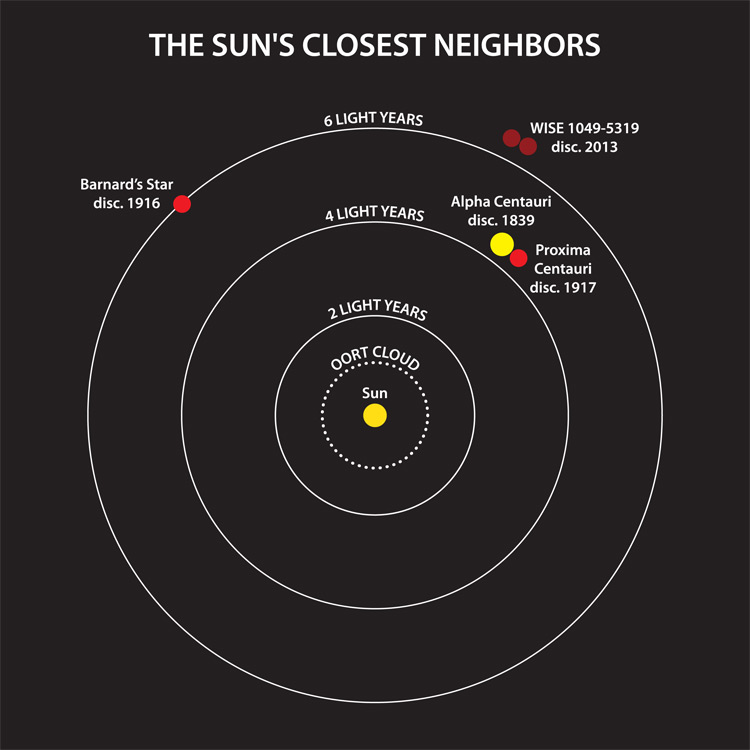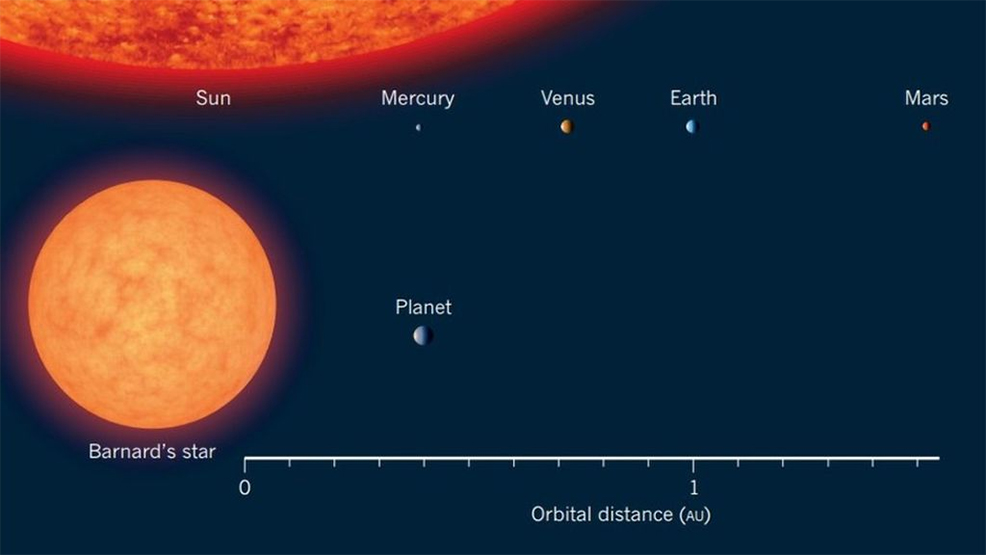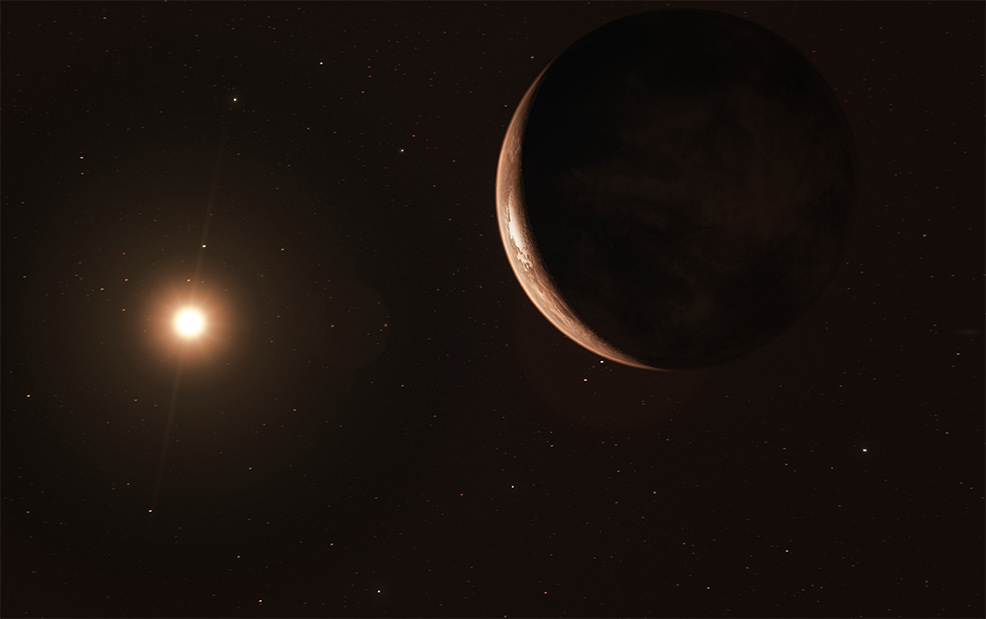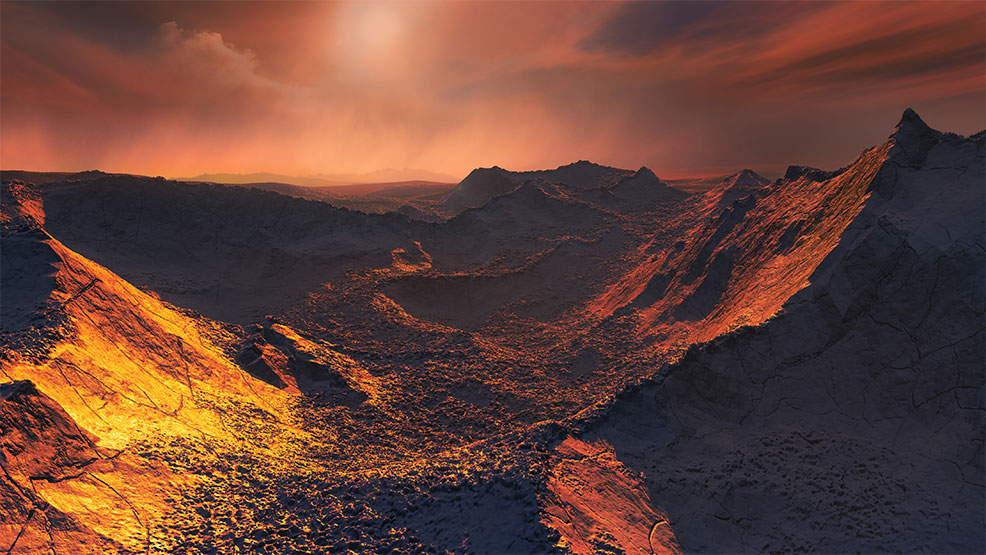
15th November 2018 Planet found orbiting Barnard's Star Astronomers report the discovery of GJ 699 b, a Super-Earth orbiting near the snow line of Barnard's Star, just six light years from Earth.
The nearest single-star system to our Sun hosts an exoplanet at least 3.2 times as massive as Earth – a so-called "super-Earth". One of the largest observing campaigns to date, using data from a worldwide array of telescopes, has revealed this frozen, dimly lit world. The newly discovered planet is the second-closest known exoplanet to Earth. This breakthrough – announced in the journal Nature – is a result of the Red Dots and CARMENES projects, whose search for local rocky planets has already uncovered a new world orbiting our nearest neighbour, Proxima Centauri.
The planet, designated Barnard's Star b (or "GJ 699 b"), orbits around its host star in roughly 233 days. Barnard's Star is a cool and low-mass red dwarf that only dimly illuminates this world. Light from Barnard's Star provides its planet with only 2% of the energy the Earth receives from the Sun. Despite being relatively close to its parent star – at a distance only 0.4 times that between Earth and the Sun – the exoplanet lies close to the "snow line", a zone where volatile compounds such as water can condense into solid ice. This freezing, shadowy world could have a temperature of –170°C, making it inhospitable for life as we know it.
Named after the American astronomer, Edward Emerson Barnard (1857–1923), Barnard's Star is the closest single star to our Sun (Alpha Centauri actually consists of three stars). While the star itself is ancient (probably twice the age of our Sun) and relatively inactive, it also has the fastest apparent motion of any star in the night sky. Super-Earths are the most common type of planet to form around low-mass stars such as Barnard's Star, lending credibility to this newly discovered planetary candidate. Furthermore, our current theories of planetary formation predict that the snow line is the ideal location for such planets to form. Previous searches for a planet around Barnard’s Star have had disappointing results. This latest breakthrough was possible only by combining measurements from several high-precision instruments mounted on telescopes all over the world. “After a very careful analysis, we are 99% confident that the planet is there,” said the team's lead scientist, Ignasi Ribas, at the Institute of Space Studies in Catalonia and the Institute of Space Sciences, CSIC in Spain. “However, we’ll continue to observe this fast-moving star to exclude possible, but improbable, natural variations of the stellar brightness which could masquerade as a planet.”
The astronomers used the Doppler effect to find the exoplanet candidate. While the planet orbits the star, its gravitational pull causes the star to wobble. When the star moves away from the Earth, its spectrum redshifts; that is, it moves towards longer wavelengths. Similarly, starlight is shifted towards shorter, bluer, wavelengths when the star moves towards Earth. Astronomers take advantage of this effect to measure changes in a star’s velocity with astounding precision. The High Accuracy Radial velocity Planet Searcher (HARPS) in Chile, for example, can detect variations as small as 3.5 km/h – about walking pace. This approach to exoplanet hunting is known as the radial velocity method, and has never before been used to detect a similar super-Earth type exoplanet in such a large orbit around its star. “We used observations from seven different instruments, spanning 20 years of measurements, making this one of the largest and most extensive datasets ever used for precise radial velocity studies,” explained Ribas.
"We combined archival data from other teams with new, overlapping, measurements of Barnard’s star from different facilities,” explained Dr. Guillem Escudé (Queen Mary University of London), co-lead scientist. “The combination of instruments was key to allowing us to cross-check our result.” Dr. Escudé added it was "possibly a mostly rocky planet with a massive atmosphere. It's probably very rich in volatiles like water, hydrogen, carbon dioxide – things like this. Many of them are frozen on the surface. The closest analogue we may have in the Solar System might be the moon of Saturn called Titan, which also has a very thick atmosphere and is made of hydrocarbons. It has rain and lakes made of methane." "This discovery means a boost to continue on searching for exoplanets around our closest stellar neighbours, in the hope that eventually we will come upon one that has the right conditions to host life," said co-author Cristina Rodríguez-López, researcher at the Institute of Astrophysics of Andalusia.
Comments »
If you enjoyed this article, please consider sharing it:
|










